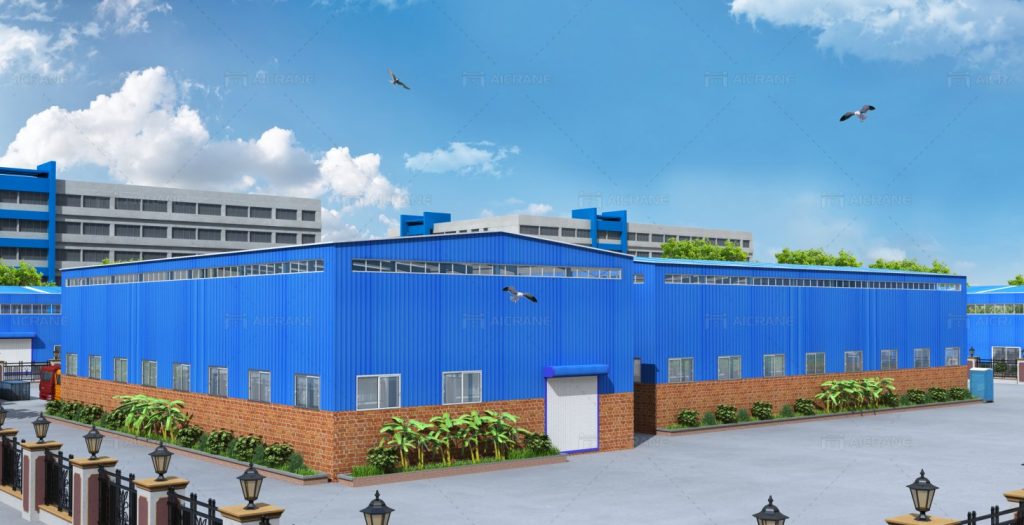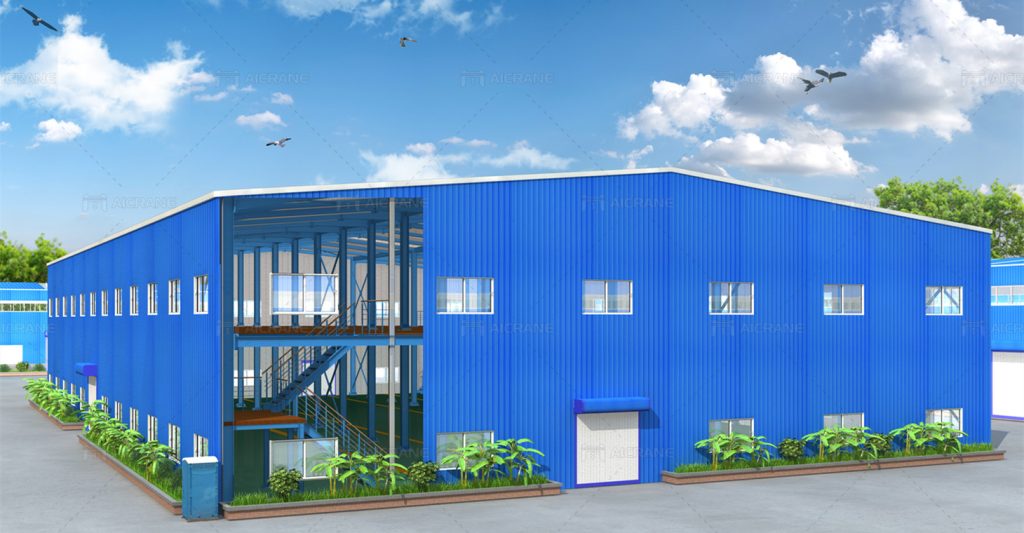Steel building factories are widely used in various industries due to their durability, cost-efficiency, and versatility. Whether it’s for manufacturing, warehousing, or industrial operations, steel buildings provide a sturdy and low-maintenance solution for businesses. However, to ensure the longevity and functionality of a steel building factory, proper installation and ongoing maintenance are critical. This passage will cover essential tips for both installing and maintaining a steel building factory to maximize its lifespan and efficiency.

Installation Tips for a Steel Building Factory
Proper Site Selection and Preparation
Before installation begins, it’s essential to select and prepare the right site. The location should be carefully chosen, considering accessibility, soil conditions, and environmental factors.
Soil Assessment: Perform a soil test to determine whether the ground can support the weight of the steel structure building and its foundation. Unstable soil may require additional preparation or reinforcement to ensure the building’s stability.
Level Ground: The ground must be leveled properly to ensure the steel building sits evenly. Uneven surfaces can lead to structural issues, misalignment, and challenges in construction.
Drainage System: Install an efficient drainage system to prevent water from accumulating around the foundation. Poor drainage can lead to water damage or corrosion of the steel structure construction (https://aicranemachine.com/steel-structure/workshop/) over time.
Foundation Design and Installation
The foundation is the base upon which the entire steel building factory is constructed, making it crucial to get this step right.
Concrete Foundation: A strong, properly cured concrete foundation is essential. The foundation must be designed to withstand the load of the steel structure as well as any additional weight from equipment, machinery, or stored goods.
Anchor Bolts: Ensure that anchor bolts are installed correctly during the foundation pouring process. These bolts are vital for securing the steel columns to the foundation. Misalignment can result in serious structural issues during the building assembly.
Curing Time: Allow the foundation sufficient time to cure before beginning the steel erection process. Rushing this can weaken the foundation and lead to long-term problems.
Frame Erection
The frame of the steel building is the skeleton that supports the entire structure, so proper erection of the steel frame is essential.
Follow the Manufacturer’s Instructions: Always follow the manufacturer’s guidelines (from Aicrane) and blueprints during the erection process. Precision is key in ensuring that the steel frame is assembled correctly.
Safety Measures: Use safety measures such as harnesses and cranes during the assembly to protect workers and ensure that the steel members are installed securely.
Bracing and Aligning: Install temporary bracing to stabilize the structure as each section of the frame is erected. This helps prevent misalignment or structural collapse during the assembly process.
Roof and Wall Panel Installation
Once the frame is up, the next step is installing the roof and wall panels.
Proper Sealing: Ensure that panels are sealed correctly to prevent leaks and water ingress. Water can cause rusting and weaken the structural integrity of the building.
Insulation: Installing insulation in the roof and walls helps regulate temperature inside the factory, improving energy efficiency and creating a more comfortable working environment.
Check for Gaps: Inspect the walls and roof for any gaps or imperfections that could allow air or moisture to enter. Sealing these gaps properly is crucial for maintaining a weather-resistant structure.

Maintenance Tips for a Steel Building Factory
Regular Inspections
Periodic inspections of the steel building factory are essential for identifying potential issues before they become serious problems.
Structural Inspection: Check for any signs of damage, such as bent or misaligned beams, which could indicate structural issues. Catching these early can prevent further damage and costly repairs.
Roof and Wall Inspection: Inspect the roof and walls for leaks, rust, or damage. Ensure that the gutters and downspouts are functioning properly and draining water away from the building.
Foundation Check: Inspect the foundation for cracks or signs of settling. Foundation problems can compromise the entire structure, so it’s essential to address any issues as soon as they are detected.
Corrosion Prevention
One of the main enemies of a steel building factory is rust. Regular maintenance can help prevent corrosion and extend the life of the building.
Protective Coatings: Apply rust-resistant coatings or paints to steel surfaces to protect them from moisture and humidity. This is especially important in environments with high humidity or where the building is exposed to corrosive substances.
Regular Cleaning: Clean the exterior of the building regularly to remove dirt, debris, and pollutants that can accelerate corrosion. Pressure washing is an effective way to maintain the cleanliness of the building’s exterior.
Rust Removal: If rust spots do appear, they should be addressed immediately. Use wire brushes or sandpaper to remove the rust, then apply a protective coating to prevent further corrosion.
Roof Maintenance
The roof of a steel building is exposed to the elements and requires regular maintenance to prevent leaks and structural damage.
Gutter Cleaning: Keep gutters and downspouts clear of debris to ensure that water is properly drained away from the roof and foundation. Clogged gutters can cause water to back up and lead to leaks or rust.
Roof Panel Maintenance: Check roof panels for any signs of damage or looseness. Replace any damaged panels and reseal any areas where leaks might occur.
Snow and Ice Removal: In cold climates, snow and ice can accumulate on the roof and add significant weight to the structure. Remove excess snow to prevent structural damage or roof collapse.
HVAC and Ventilation System Maintenance
Maintaining the HVAC and ventilation systems within a steel building factory is essential for ensuring a comfortable working environment and preventing moisture buildup.
Filter Changes: Regularly replace air filters to keep HVAC systems running efficiently. Clogged filters can reduce the effectiveness of the system and increase energy costs.
Duct Cleaning: Clean ventilation ducts to prevent dust and debris buildup, which can impair air quality and reduce system efficiency.
Moisture Control: Proper ventilation helps control humidity levels inside the building, which can reduce the risk of corrosion and maintain a more comfortable indoor environment.
Door and Window Maintenance
Doors and windows are high-traffic areas that require regular maintenance to ensure they function properly and maintain the building’s energy efficiency.
Lubrication: Lubricate door hinges and tracks regularly to ensure smooth operation and prevent wear.
Seal Checks: Inspect window and door seals for any gaps or damage. Resealing these areas can prevent drafts, improve energy efficiency, and protect the building from moisture.
By following these tips for installing and maintaining a steel building factory, businesses can ensure the longevity and reliability of their structures. Proper installation ensures that the building is stable and functional from the outset, while regular maintenance helps prevent damage, reduce repair costs, and extend the building’s lifespan.